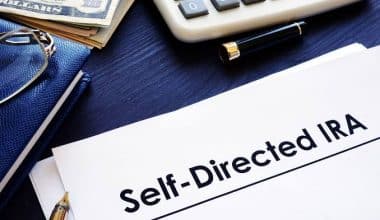Bonds are widely regarded as a vital component of a well-diversified financial strategy. They provide income to a portfolio while posing less risk than equities. With the appropriate method, you can obtain the same or higher yield as you would from CDs or savings accounts (and frequently more), albeit you may have to deal with bond price fluctuations and some added risk. Here’s a look at how bonds work, different types of bonds including government bonds, how to invest in one, even as beginners, and the best to invest in. Let’s get into detail.
What is a Bond?
Bonds are an agreement between an investor and the bond issuer, which can be a company, government, or government agency, to pay the investor a set sum of interest over a set period of time. When the bond matures at the conclusion of the period, the issuer repays the bondholder’s principal. A bond is a sort of debt asset that can be used to finance a business.
Types of Bonds to Invest in
Credit agencies score certain types of bonds, such as corporate and government bonds, to assist establish their quality. These ratings are used to assist determine the possibility of investment repayment. Bond ratings are often divided into two categories: investment grade (better rated) and high yield (lower rated). Bonds of the following sorts can be purchased:
#1. Government Bonds
Government bonds are one good type of bonds to invest in. When most people talk about government bonds, they are referring to a kind of debt instrument known as Treasurys. Treasury bonds issued by the United States are widely regarded as one of the safest if not the safest, types of bonds in the world to invest in. They are deemed risk-free for all intents and purposes. (Please keep in mind that they are free of credit risk but not interest rate risk.)
Government bonds are commonly used as a standard against which other bond prices or yields are measured. The price of any bond is best understood in conjunction with its yield. Most bond yields are given as a yield spread to a comparable US Treasury bond as a gauge of relative value.
Example of Government Bonds: Yield Spreads
A corporate bond’s spread may be 200 basis points higher than the current 10-year Treasury. This means that the corporate bond yields 2% more than the existing 10-year Treasury. Assuming that this corporate bond is non-callable (meaning that the principal cannot be bought out early) and has the same maturity date as the Treasury bond, the extra two percent in yield can be interpreted as a measure of credit risk. This credit risk metric, or spread, will fluctuate depending on company and market conditions.
Ready to undergo some yield in exchange for a risk-free portfolio? Treasury bonds will be put to use when building a portfolio with coupon payments and maturities that match your income requirements. The objective is to reduce your reinvestment risk by aligning coupon payments and maturities as closely as feasible to your income requirements. Treasury Direct allows you to buy US Treasuries directly from the US Treasury Department at the same pricing (yields) as large financial institutions.
#2. Corporate Bonds
While not all publicly traded corporations raise funds by issuing bonds, there are corporate bonds available from thousands of different issuers. Corporate bonds include credit risk and must thus be evaluated in light of the company’s business prospects and cash flow. Business prospects and cash flow are not the same things; a company may have a bright future but lack the current cash flow to pay its debt obligations. Ratings for corporate bonds are provided by credit rating organizations such as Moody’s and Standard & Poor’s to assist investors in determining the issuer’s capacity to make timely interest and principal payments.
Yield is a useful measure of relative value between corporate bonds and US Treasury bonds. When comparing two or more corporate bonds based on yield, it is critical to consider maturity.
Example: Bond Yield and Credit Risk
A five-year corporate bond with a 7% yield may not have the same credit risk as a 10-year corporate bond with the same 7% yield. If the five-year US Treasury yields 4% and the 10-year US Treasury yields 6%, we might conclude that the 10-year corporate bond has lower credit risk because it trades at a “tighter” spread to the Treasury benchmark. In general, the higher the yield sought by investors, the longer the term of a bond.
#3. Mortgage Bonds
Mortgage bonds, like corporate bonds, have some credit risk and, as a result, trade at a yield spread to US Treasuries. These mortgage bonds are also subject to prepayment and extension concerns. These interest rate risks are related to the likelihood that the underlying borrowers would refinance their mortgages as interest rates change. In other words, mortgage bonds include an embedded call option that the borrower can exercise at any moment. The pricing of this call option has a significant impact on the yields of mortgage-backed securities. Any investor making relative value comparisons between mortgage bonds and/or other types of bonds must understand this.
Mortgage bonds are classified into three types: Ginnie Mae bonds, agency bonds, and private label bonds.
- Ginnie Mae bonds are guaranteed by the Federal Housing Administration (FHA), Veterans Affairs, or other federal housing agencies and are backed by the full faith and credit of the United States government.
- Agency mortgage bonds are those issued by government-sponsored enterprises (GSEs) that finance homes: Fannie Mae, Freddie Mac, and the Federal Home Loan Banks. While these bonds do not carry the full faith and credit of the United States government, they are guaranteed by the GSEs, and the market typically assumes that these corporations have an implicit federal government guarantee of backing.
- Private-label bonds are issued by financial institutions such as large mortgage originators or Wall Street firms.
How Beginners Can Invest in Bonds
Interested in how to invest in different types of bonds even as beginners? There are various alternatives available. Bonds, for example, can be purchased directly from the bond issuer. Alternatively, you can buy bonds through a brokerage firm in the same way that you would buy stocks.
Furthermore, you can buy individual bonds or shares in bond funds. Let’s take a deeper look at how to invest in the greatest types of bonds even if you’re a bunch of beginners:
#1. Buying individual bonds through a brokerage account
Individual bonds can be purchased through a brokerage account in the same way that stocks can. Fees vary widely, and understanding all of the possibilities, with potentially dozens of bond options per firm, can be difficult. Furthermore, you must investigate the company to ensure that it will be able to pay its obligations.
#2. Buying bond mutual funds and exchange-traded funds (ETFs)
When you buy a bond mutual fund or an exchange-traded fund (ETF), you don’t have to decide which bonds to buy. Instead, the fund or ETF provider selects them for you and frequently divides them into funds based on kind or term.
#3. Purchasing bonds directly from the United States Treasury
The United States federal government allows you to purchase Treasury bonds directly through a program called Treasury Direct. This allows you to skip a middleman and, as a result, avoid the fees that you would typically pay a broker.
ETFs can be an excellent alternative for investors because they allow you to quickly address holes in your portfolio diversification. For example, if you require short-term investment-grade bonds, you can simply purchase an ETF that provides such exposure. The same is true for long-term or medium-term bonds, or whatever you require. You have a lot of possibilities. ETFs also provide diversity through exposure to a variety of bond kinds, and they typically carry moderate fees and are tax-efficient.
Bonds can be easily purchased and traded through a broker. You may also be required to pay a commission to a broker, or the broker may make a “markdown,” lowering the price to meet the transaction’s costs.
Popular Bond-buying Strategies
If you’re buying bonds for income, one of your main concerns is the direction of interest rates: up, down, or sideways. Or maybe, if interest rates rise, the value of your bonds lowers. If interest rates fall, the value of your bonds rises. Bond investors, on the other hand, are concerned about reinvestment risk, or whether they will be able to receive an attractive return when their bond matures.
As a result, bond investors are continuously attempting to optimize their current income from their bond portfolio versus future income.
The following are some of the most prevalent strategies:
#1. Ladders
An investor employs this technique by purchasing bonds having staggered maturities (for example, bonds maturing in one year, two years, three years, four years, and five years). When a bond matures, the proceeds are reinvested in a bond with a longer maturity at the top of the ladder. This method is effective when you want to reduce reinvestment risk while not sacrificing too much current gain. If interest rates climb in the future, you’ll be able to profit from some of the increase.
#2. Barbells
With this technique, an investor purchases short-term and longer-term bonds but not medium-term bonds. This technique allows the investor to benefit from increasing long-term bond rates while still having access to cash through a series of lower-yielding short-term bonds. Long-term bonds, on the other hand, might experience significant volatility if interest rates rise.
#3. Bullets
In this technique, the investor purchases bonds throughout the time that mature around the same time. If you know you’ll have a large bill in five years, you can buy a five-year bond now and a four-year bond when you have extra money next year. You can add a two-year bond after three years. Then, at the end of the five-year period, you’ll have all of the money ready when you need it.
In each scenario, the approach should take into account both your predicted demands and your predictions for how the market and interest rates will perform over time.
What are the Benefits of Investing in Bonds?
Bonds provide numerous benefits, including:
- Capital preservation: Capital preservation implies protecting the absolute worth of your investment through assets that promise a return of principal. Bonds are less risky than stocks and can be a smart alternative for investors who have less time to recuperate losses.
- Income generation: Bonds generate a predetermined amount of revenue at regular periods in the form of coupon payments.
- Diversification: Investing in a mix of stocks, bonds, and other asset classes can help you develop a portfolio that seeks rewards while being resilient in all market conditions. Stocks and bonds have an inverse connection, which means that as the stock market falls, bonds become more desirable.
- Risk management: Fixed income is widely assumed to be less risky than stocks. This is due to the fact that fixed-income assets are less sensitive to macroeconomic risks such as economic downturns and geopolitical disasters.
- Invest in your city: Municipal is one of the good types of bonds that enable you to give back to your community when you invest in them. While these bonds may not deliver the higher yield of a corporate bond, they are frequently used to assist fund the construction of a hospital or school or to improve the standard of living for many people.
Which Bond Gives Highest Return?
The highest-yielding bonds are:
- Short-Term Corporate Bond Index Fund Vanguard
- Total International Bond Index Fund Vanguard
- Total Return Bond Fund Guggenheim
- Short-Term Bond Fund of Fidelity
Are Bonds Really a Good Investment?
Bonds are a fantastic method to diversify your portfolio and protect yourself from market volatility if you are heavily invested in stocks. If you are nearing or have retired, you may not have the time to ride out stock market downturns, in which case bonds are a safer investment.
What are the 4 Types of Bonds you can Invest in?
Corporate bonds, municipal bonds, government bonds, and agency bonds are the four most popular types of bonds in which you can invest.
Can I Buy Bonds from my Bank?
Treasury securities can be purchased by individuals, organizations, fiduciaries, and corporate investors through a bank, broker, or dealer. You can bid for Treasury marketable securities non-competitively or competitively with a bank, broker, or dealer, but not both at the same auction.
What Bond Pays the Most Interest?
Non-investment grade bonds, often known as high-yield or speculative bonds, typically provide higher interest rates to compensate investors for higher risk. Bonds also differ in terms of the type of interest payments they provide.
How Much is a 1000 Bond Worth?
It is valued at $1,445.60, with $32.00 in YTD interest.
What are the 5 Types of Bonds?
Bonds are classified into five types: Treasury, savings, agency, municipal, and corporate. Each bond has its unique set of sellers, purposes, purchasers, and risk/return levels. If you wish to take advantage of bonds, you can also acquire bonds-based instruments, such as bond mutual funds.
Can You Ever Lose Money on Bonds?
A bond might lose value if you sell it before the maturity date for less than you paid or if the issuer fails to make payments. Before you make an investment. Risk is frequently involved.
Conclusion
Bonds can provide an attractive return without requiring the same level of risk as investing in stocks. Unlike stocks, which must thrive in order for the investment to be successful, bonds can be lucrative even if the company (or government) only survives. While bonds are generally low risk, they do have significant flaws, particularly if inflation and interest rates rise. However, savvy investing methods can assist to limit these dangers.
- HOW TO BUY TREASURY BONDS: What You Should Know & Guide
- HOW TO BUY I BONDS FROM TREASURY: All You Should Know
- HOW TO INVEST IN BONDS: Guide & What You Should Know
- HOW TO BUY I BONDS SCHWAB: Step-by-Step Guide 2023
- High Yield Investments: How to Spot High Yield Investments
- INDUSTRIAL AUTOMATION: Definition, Examples, Companies & Importance
- MUNICIPAL BONDS: Definition, Rates, How to Buy & Difference
- How To Buy Bonds: Top Easy Steps to Follow






